Many Tuscan towns are authentically medieval, as is Volterra. Today’s city is delightful, less touristy than San Gimignano, Cortona or Pienza but arguably just as beguiling. Even so, it’s an authentic medieval city with an Etruscan sensibility. Perched on a majestic, windswept ridge overlooking the Sienese hills, Volterra commands its setting and remains the most Etruscan of Tuscan cities. Between the 8th and 4th centuries BC, Etruria Propria flourished as a confederation of 12 city-states in Central Italy. Enigmatic Volterra began as the Etruscan city-state of Velathri but became the important Roman municipality of Volterra in the 4th century BC. Scrape the surface of Volterra and discover the Etruscan spirit beneath. Expect temple walls recycled into Roman buildings and ancient epigraphs encrusted in Renaissance palaces. Walking round the defensive fortifications reveals views of this multi-layered medieval town, with its Roman and Etruscan walls, and the wide sweep of countryside below.
Volterra
-
-
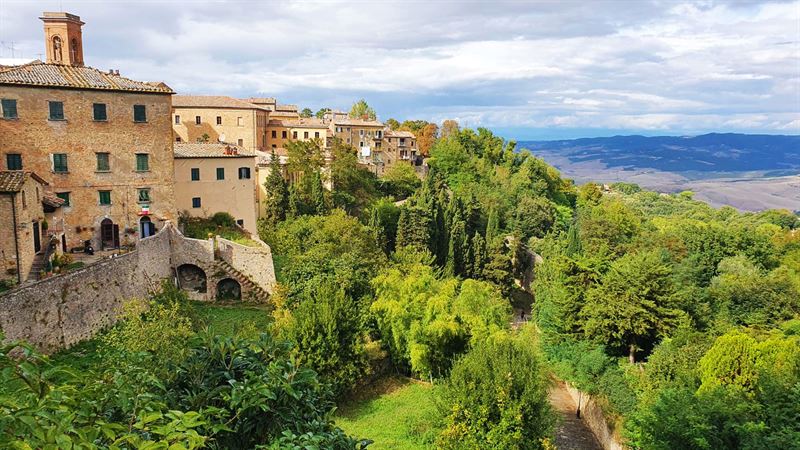
Top Ten Things to Do
Volterra makes for the archetypal Tuscan town – before tourism took over. Enjoy the relative tranquillity to explore the Etruscan, Roman and medieval heritage before shopping for locally-produced alabaster or dining in an Etruscan cellar.
-
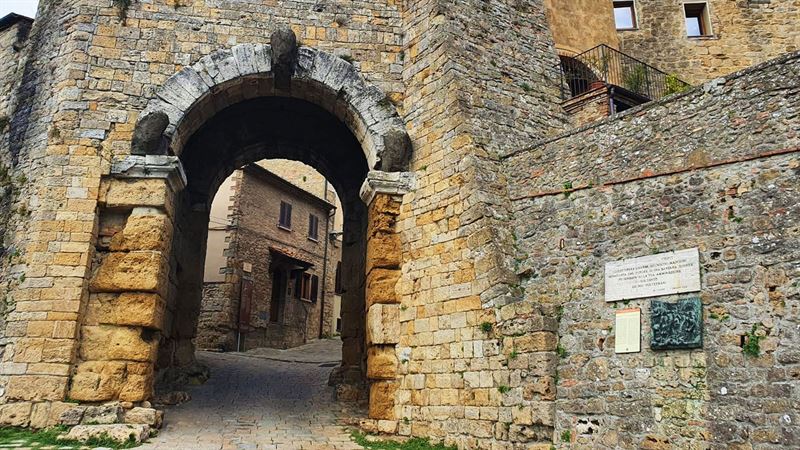
1. Porta all’Arco - Etruscan gateway
The Porta all’Arco, the Arched Gate, is the best-preserved Etruscan gateway in Italy, dating from the 4th century BC. Although probably inspired by Mesopotamian architecture, the gateway was partially remodelled by the Romans in the 1st century BC. The Roman vaulting rests on massive Etruscan bases and is the only surviving part of the Etruscan walls. The vaulted gateway is carved out of huge rectangular stone blocks and surmounted by three mysterious carved basalt heads. These weathered heads probably represent Etruscan or Roman gods. One popular theory has it that the gods represented the guardians of Volterra, cast in the form of Jupiter, Juno and Minerva. Minerva, the Roman goddess of wisdom, trade and the arts, existed in Etruscan mythology as `Menrva’.
The Etruscans were expert builders. From what remains of the cit¬ies, there was enough to impress Roman and Renaissance architects. Volterra is exceptional in retaining Etruscan remains above ground, from the so-called “city of the living.” Like all Etruscan cities, Volterra followed the contours of the land and sited the necropolis below the city walls and the living city above. If cities of the dead predominate today, it is by accident and not by design. This magnificent stone gateway survived where other public buildings, constructed of wood and clay, did not.
Address: Porta all’Arco, via Porta all’Arco, Volterra
Web: www.volterratur.it -
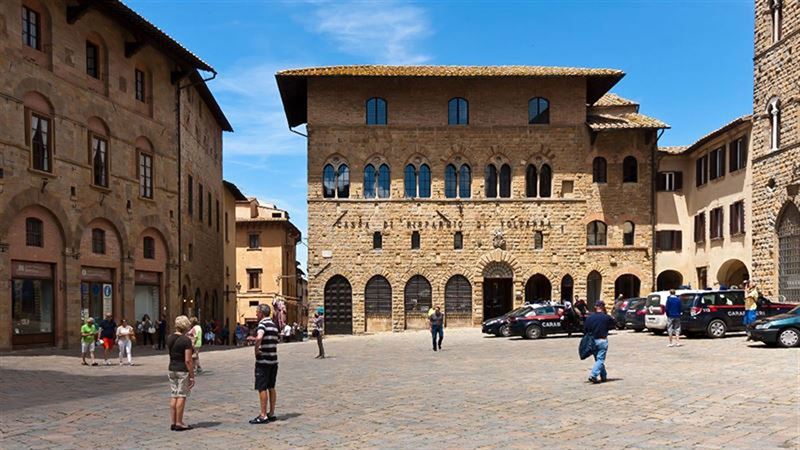
2. Piazza dei Priori – medieval masterpiece
A charming road winds its way uphill from the Etruscan Archway, the Porta all’Arco, to the Piazza dei Priori, the town’s set-piece square. The Piazza dei Priori is proof of Volterra’s rich medieval heritage, with its cluster of noble palaces. The square is dominated by the lofty Palazzo dei Priori (1208), the oldest town hall in Tuscany and supposedly the model for Florence’s Palazzo Vecchio. Even if the clock tower and crenellations were remodelled at a later date, the overall impression is of a typical Tuscan town hall. On a fine day consider climbing to the top of the belltower for urban views. Across the square stands the 13th-century Palazzo Pretorio, with its crenellated Torre del Porcellino (Tower of the Little Pig), named after its decorative relief of a boar.
On the square, call into the tourist office to pick up a map, buy a city pass, known as the Volterra Card. You can also book a Volterra audio-guide or book a walking tour.
Address: Volterra tourist office: Piazza dei Priori 29, Volterra
Web: www.volterratur.it -
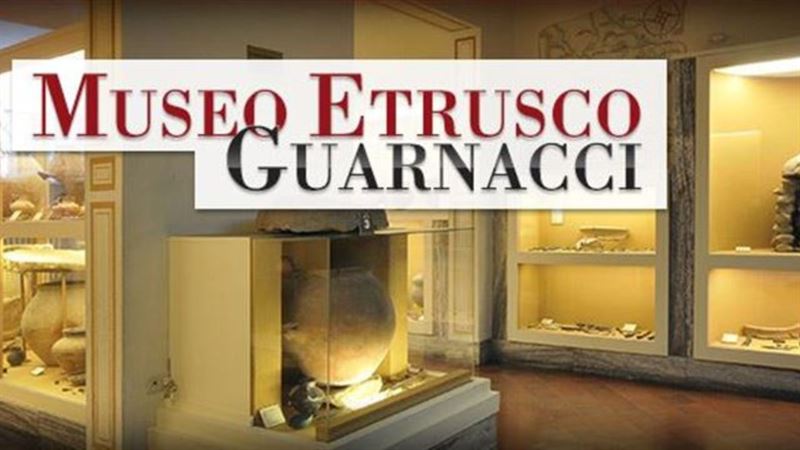
3. Museo Etrusco - top Etruscan museum
Volterra displays some of the best Etruscan art outside Rome, with the finest treasures in the Museo Etrusco Guarnacci. Founded in 1761, this is one of the oldest public museums in Europe, and is easily the city’s finest museum. The funerary urns and alabaster sarcophagi run the gamut of Etruscan demonology and Greek mythology, featuring sea monsters, Greek gods, beaked griffins and sirens. The Married Couple urn is a masterpiece of realistic portraiture, but the single most moving sculpture from this era is The Shadow of the Evening (L’Ombra della Sera). Although over two thousand years old, this bronze statuette resembles a Giaco¬metti sculpture and seems modern in its message and design. This mysterious, elongated figure does indeed resemble the shadow of a boy thrown by the low beams of the setting sun. It blurs immortality and mortality in true Etruscan fashion.
Wherever archaeologists dig in the city, they turn up new treasures. Sometimes they do not even need to dig, since parts of the city, built on soft tufa-stone and weakened by subterranean springs, have been slipping slowly down the hillside for centuries, revealing the remains of an extensive necropolis. The tombs from Volterra’s Etruscan necropolis have provided many of the pieces on display. Pick up the audio-guide at the museum, remembering that the museum is included in the general city pass, the Volterra Card.
Address: Museo Etrusco Guarnacci, Via Don Minzoni 15, Volterra
Web: www.comune.volterra.pi.it/museo-etrusco-guarnacci -
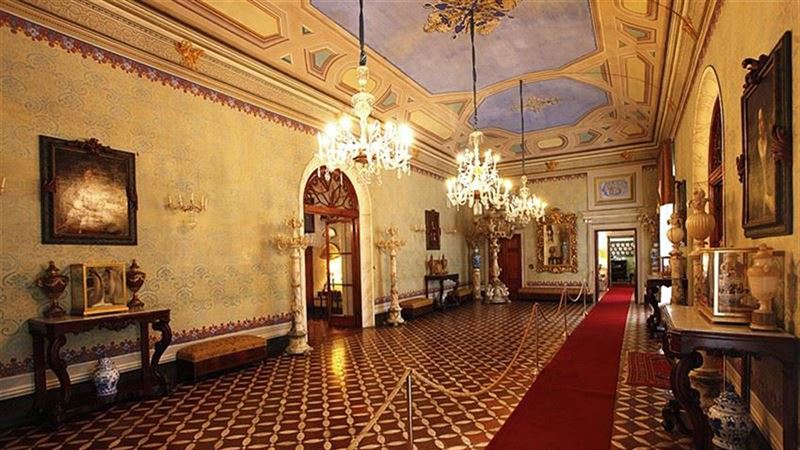
4. Palazzo Incontri-Viti - merchant’s mansion
This impressive mansion also feels like a private home - and it began as the home of a discerning alabaster merchant whose heirs still live here. Giuseppe Viti (1816-60) travelled the world to present his wares and, in India, sold his alabaster to the local rajah and bizarrely, was then made Emir of Nepal. The façade of the mansion is attributed to Ammannati, who worked on the Palazzo Pitti in Florence. Each salon is grander than the next, adorned with art, porcelain and alabaster, a reminder that the palace once belonged to one of Volterra’s richest citizens. Renaissance buildings like these blend in surprisingly gracefully with the medieval Volterran houses. After exploring the patrician palaces, retreat to Le Cantine del Palazzo, the Etruscan-Roman cellars below Palazzo Incontri-Viti, for a drink or a meal in a cavern-like setting with a Roman cistern as decoration.
Address: Via dei Sarti 41, Volterra
Web: www.palazzoviti.it -
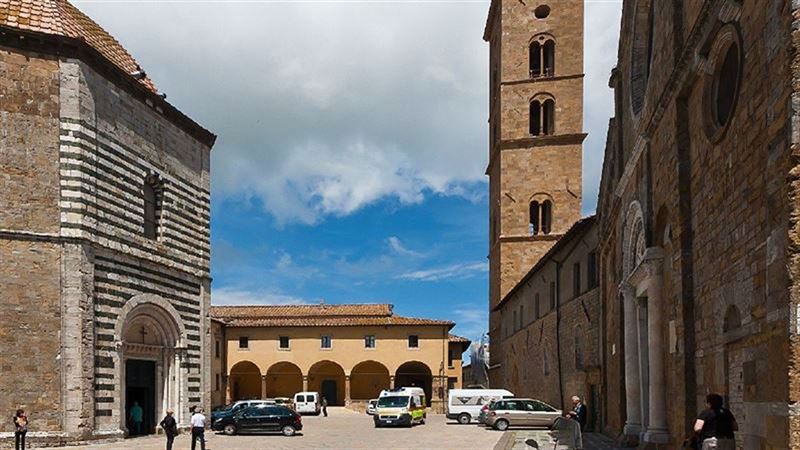
5. Piazza San Giovanni - cathedral square
To the south of Piazza dei Priori is Piazza San Giovanni, the religious centre of Volterra. Crowning the square is the 12th-century Duomo, with its Pisan Romanesque façade. Officially known as the Cattedrale di Santa Maria Assunta, the cathedral is currently closed for restoration, probably until September 2019. Inside, the highlight is the impressive coffered ceiling and a collection of works of art dating from the Middle Ages to the Renaissance. The sculpture of the Deposition is an extremely rare Romanesque woodcarving, simple in execution but full of pathos and drama. The Duomo, remodelled in the 16th century, should be returning to its former glory fairly soon.
Opposite the cathedral stands the octagonal Baptistery, supposedly built on the site of a Pagan temple. The black-and-white striped Baptistry is notable for its harmonious marble doorway and for its fine baptismal font, sculpted by Sansovino in 1505.
Address: Piazza San Giovanni, Volterra
Web: www.volterratur.it -
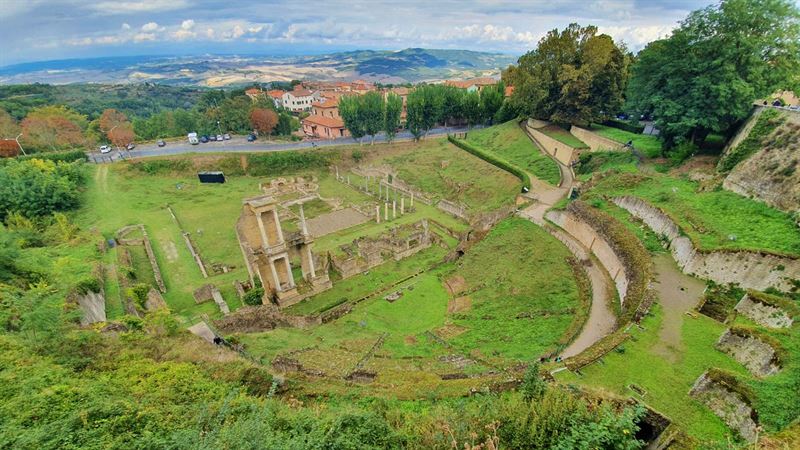
6. Volterra’s Roman trail
Any walk through Volterra reveals Roman remains, the Etruscan city the Romans adapted to their tastes. Etruscan Velathri became Volterrae, an important Roman municipality when Rome annexed Etruria in 351 BC. The city followed the new faith of Christianity, and at the Fall of the Roman Empire in 476 AD was already the centre of a large diocese. Under Roman rule, Etruscan and Latin languages co-existed but Etruscan culture was crushed. The Etruscan role degenerated into the provision of soothsayers, musicians, dancers and fighters for Rome.
The Romans’ most significant legacy, apart from the roads, is the template they laid down for the classic town plan, with the forum – evolving into the piazza – the focal point. Yet Volterra’s Etruscan heritage was often built upon by the Romans, including in the so-called Etruscan Arch, the vaulted Porta all’Arco Etrusco, with its Roman vaulting. On the north side of town, just below the city walls, lies the excav¬ated Roman Theatre, which was partly destroyed in medieval times in order to consolidate the city fortifications. This Teatro Romano, which dates from the 1st-century BC, was founded by two Roman Consuls. Adjoining the Roman theatre are the impressive remains of a 3rd-century Roman Bathhouse, built after the Roman Theatre had been abandoned. There’s a good view of the theatre from via Lungo Le Mura del Mandorlo.
Address: Roman Theatre (Teatro Romano), Via Francesco Ferrucci, Volterra
Web: www.volterratur.it -
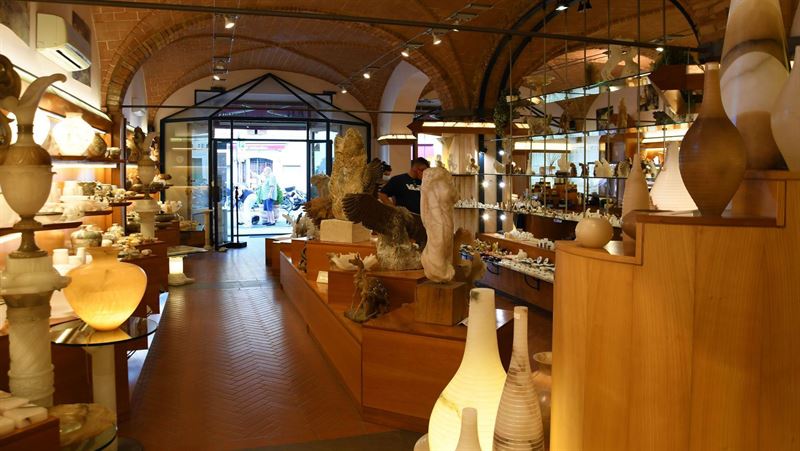
7. Alabaster crafting
As everything in Volterra, even alabaster-carving is an Etruscan legacy. It is one of the many gifts the Etruscans have passed onto their descendants in this most Etruscan of cities. The ancient craftsmen made great use of alabaster from the 5th century BC onwards, primarily for their beautifully sculpted funerary urns. In the local museums and workshops you’ll come across bowls, urns, medallions, religious artefacts, candleholders, lamps, vases and Neoclassical sculpture. This art of alabaster working has been passed down over the centuries with only very limited changes. Alabaster is sold in Volterra’s workshops, as well as being exported.
Begin in the Etruscan Museum to see a careful reconstruction of an Etruscan workshop. You can also see the grand collection of alabaster created by Giuseppe Viti, the city’s foremost alabaster merchant in the 19th century. Palazzo Incontri-Viti displays his superb alabaster pieces, including the grand candelabras in the ballroom, made for Emperor Maximilian, who was shot in 1867 before he could collect them. The Alabaster Museum is the other tempting option. Set in a medieval tower, the Alabaster Museum (Ecomuseo dell’Alabastro) tells the history of the translucent stone from its excavation to its commercial production. On display are prize pieces from the Etruscan era or today, or from the 18th century, when the local crafts industry was at its peak.
Address: Alabaster Museum, Ecomuseo dell’Alabastro, Via dei Sarti, Volterra
Web: www.volterratur.it -
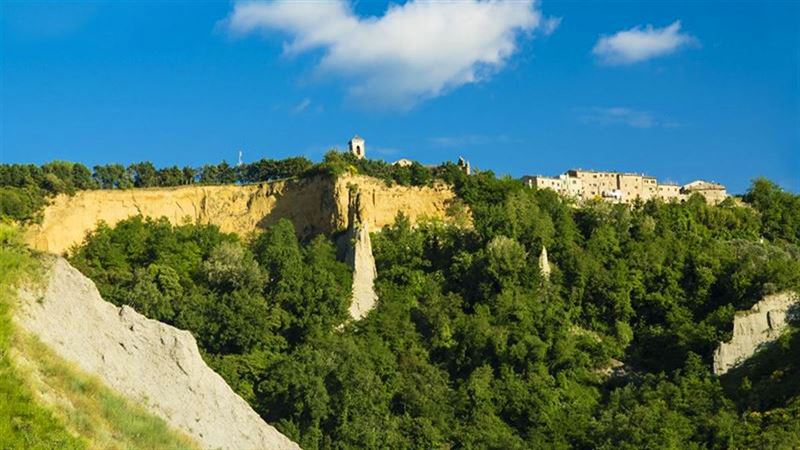
8. Le Balze – Volterra’s dramatic crags
The countryside around Volterra is one of gentle, undulating hills, interrupted in the west by the wild and awe-inspiring spectacle of abrupt crevasses known as Le Balze, “the Crags”. Over the centuries, these deep gullies, created by the continual erosion of layers of sand and clay, have swallowed up fortifications, churches and settlements. The Etruscan walls that once stood here were casualties of a landslide, as were early Christian tombs. Today an 11th-century abbey, the Badia, sits on a precipice, awaiting its inevitable fate. For the perfect view of this dramatic landscape, exit through the western San Francesco Gate, passing the Borgo San Giusto until you reach Le Balze (a 20-minute walk).
Web: www.volterratur.it -

9. Pinacoteca Comunale – city art gallery
The Pinacoteca in Palazzo Minucci-Solaini houses valuable paintings from the Sienese and Florentine schools. While this is not a collection to compete with the best museums of Tuscan Old Masters, this is still a small but significant collection. Highlights include an Annunciation by Signorelli and Christ in Glory by Ghirlandaio. The most famous painting in the collection is a masterly Deposition from the Cross by Rosso Fiorentino (1495–1540).
The Volterra Card is a city pass which includes the Pinacoteca along with all the key sites in Volterra. Alternatively, you can buy a joint ticket that includes access to the Pinacoteca and the neighbouring Alabaster Museum, the Ecomuseo dell’Alabastro. This museum shares and entrance so is conveniently seen at the same time.
Address: Palazzo Minucci Solaini, Via dei Sarti 1, Volterra
Web: www.volterratur.it/vieni/arte-cultura/i-musei/pinacoteca/ -
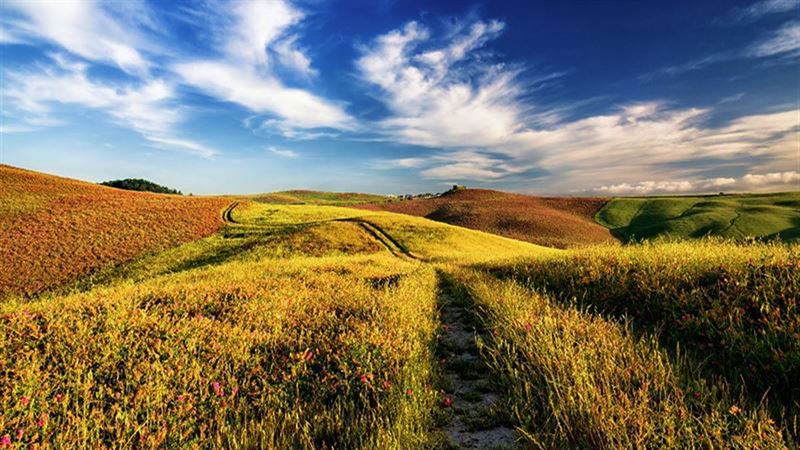
10. Volterra walking tours
Volterra is a city that comes alive with the right guide. Volterra Walking Tour runs lunchtime and early evening tours linked to Volterra’s amazing heritage, including its Etruscan, Roman and medieval history. The tours are run by an American with an art history background and deep local knowledge. For walking tours in languages other than English, book through the local tourist office. Alternatively, you can book a private tour with Tuscan Tour, including a wine tour around Volterra with an Italian sommelier.
For something quirky, lovers of the Twilight saga (books and films) can investigate the spooky side of the city. Ever since Stephanie Meyer set her best-selling vampire novel in Volterra, droves of `vampire-ologists’ have been visiting. The Twilight saga has sold over 50 million copies worldwide and New Moon, the second in the series, is the fictional home of the Volturi, a coven of vampires. Meyer dreamed of Volterra, “the city the vampires have secretly held for 3000 years, since the time of the Etruscans.” Even if neighbouring Montepulciano was chosen for the filming (it has a larger, sterner main square), Volterra was the inspiration for the melodrama.
Address: Volterra tourist office (for tours in various languages):
Piazza San Giovanni, Volterra
Web: www.volterratur.it -
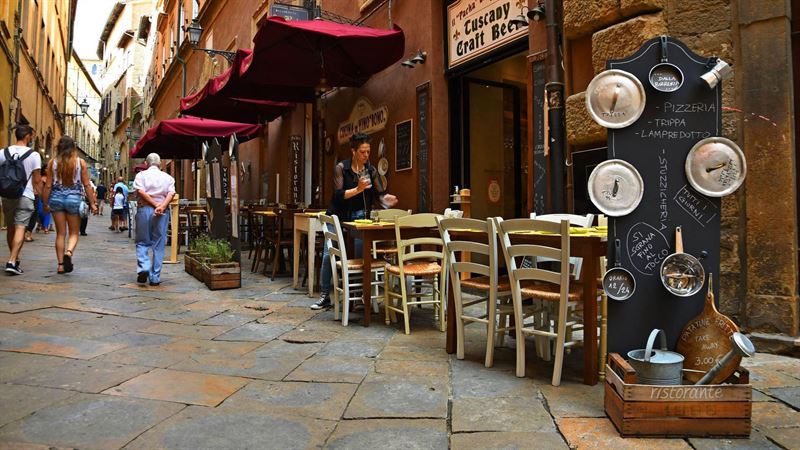
Eating & Drinking
Local cuisine from Volterra is a hearty variant on classic Tuscan cuisine. Look out for zuppa volterrana, a thick vegetable and bread soup, or trippa alla volterrana (tripe cooked with tomato, sausage and herbs). Pasta can be made with organic local flour and includes such stalwarts as pappardelle di lepre (pasta ribbons in hare sauce) or the same pasta with wild boar (cinghiale). Other pasta dishes come with ceps (porcini) or with white Marzuolo truffles. Given the city’s Etruscan heritage and the ancient obsession with the city of the dead, try the morbid-sounding almond biscuits, called ossi di morto, `bones of the dead.’
-
Le Cantine del Palazzo
After exploring the patrician palaces, retreat to Le Cantine, the ancient cellars below Palazzo Incontri-Viti, for a drink in a cavern-like restaurant that contains a Roman cistern and an Etruscan well. On the menu are typical Tuscan specialities at decent prices but the mood is as important as the food. If you eat outdoors, there’s a view over the valley. The restaurant entrance is beside Palazzo Incontri-Viti.
Address: Via dei Sarti 39, Volterra
Web: www.lecantinedelpalazzo.it -
La Carabaccia
This charming, family-owned, female-run trattoria is deservedly popular. The name comes from the house speciality, a filling vegetable soup that makes a good `lunch on the run.’ Come for the well-priced Tuscan home cooking and friendly atmosphere. It’s a limited menu but the dishes are authentic and good, ranging from pasta to rabbit or guinea fowl stew, with fish served on Friday.
Address: Piazza XX Settembre 4-5, Volterra -
L’Enoteca del Duca
After focusing so much on death in Volterra, it’s definitely a case of carpe diem: feast on Tuscan dishes in Del Duca, both a wine bar and mid-priced restaurant. Naturally the restaurant terrace is built below the walls of the Etruscan acropolis. In the vaulted dining room expect friendly service, and Tuscan home cooking with a good selection of local wines from the family’s own vineyards. Dishes range from steaks to pasta with wild boar, and plenty of vegetarian options. The Enoteca serves inexpensive light lunches.
Address: Via di Castello 2, Volterra
Web: www.enoteca-delduca-ristorante.it -
L’Incontro
Volterra's best-loved cafe and bar is a popular spot for breakfast, cakes, pastries and panini. The bar will take you from breakfast cappuccino to cocktails and cold cuts to a late-night digestivo (liqueur). Along with the antipasto plate of cured meats and cheeses, try the brutti mai buoni (`ugly but good’) biscuits and the ossi di morto (`bones of the dead’) almond biscuits.
Address: Via Giacomo Matteotti 18, Volterra -
L’Osteria dei Poeti
This evocative spot is in the rustic-elegant style that Tuscans love, with exposed brick-and-stone walls and vaulted arches. As one of Volterra’s pricier restaurants, L’Osteria prides itself on its long wine list and its reliable modern interpretations of Tuscan classics. Dishes include bruschetta as a starter, perhaps followed by a T-bone steak and the house tiramisu.
Address: Via Giacomo Matteotti 55, Volterra
Web: osteriadeipoetivolterra.wordpress.com -
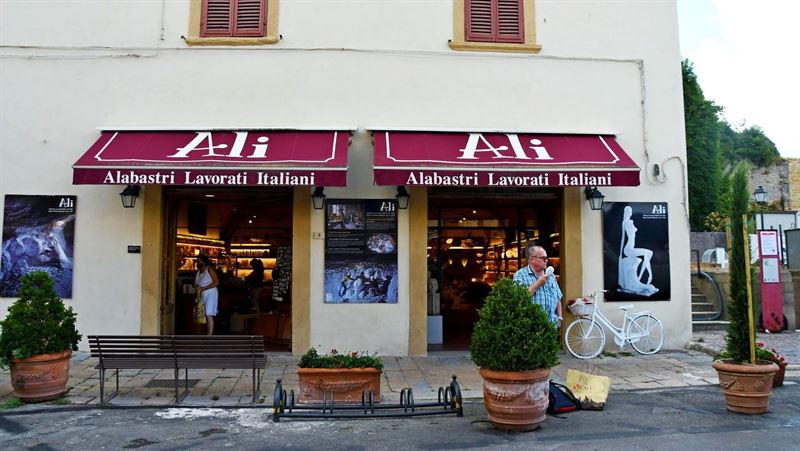
Shopping
Alabaster-working is Volterra’s exceptional craft. Shop in one of the alabaster showrooms of the bigger firms or visit a traditional alabaster-craftsman in his cramped workshop. The pleasure of shopping for alabaster in Volterra lies in the way the techniques practised today echo those used in Etruscan times. Visiting an alabaster workshop proves the point. Even the tools are very similar to those used in Etruscan times. Today’s alabaster workers can easily understand the techniques used by Etruscan alabaster masters on cinerary urns because their prehistoric tools were virtually the same as those found on a contemporary workbench. Prices depend on the type, colour and veining of the alabaster, with colours ranging from creamy white to murky yellow.
-
Cooperativa Artieri Alabastri
Founded in 1895, this co-operative aims to safeguard the traditional alabaster craft. The shop and showrooms are in the centre of town, on the main square. But to see the workshops you need to head to the outskirts of town. The association also runs alabaster tours and experiences.
Address: Piazza dei Priori 5, Volterra
Web: www.artierialabastro.it -
Alabastri Lavorati Italiani
This family-run firm is one of the most respected alabaster-crafting workshops in town. Their showroom is certainly the most elegant. Choose from lamps, sculpture, figurines, chess-pieces, table-tops, picture frames: so much can be carved from alabaster.
Address: Piazza Martiri della Liberta 5, Volterra
Web: www.alabastro.it -
Alabastri Ducceschi
The third generation of an alabaster-crafting family us still at work on traditional designs.
Address: Località San Quirico, Strada Statale (SS) 439, Volterra
Web: www.alabastriducceschi.com -
Alabastri Rossi Camillo
Dating from 1912, this alabaster workshop offers demonstrations of the craft.
Address: Via Lungo le Mura del Mandorlo 7, Volterra
Web: www.rossialabastri.com -
Parking
The last few kilometres of road to Volterra can be pretty tortuous. Volterra, like most Tuscan towns, operates a strict ZTL system, a Limited Traffic Zone. This means that the Centro Storico (historic centre) is essentially closed to traffic, particularly for non-residents.
Cars will need to be left outside Volterra or at the Piazza Martiri della Liberta car park in the south of town. This is the most convenient parking spot, and also convenient for the bus station and a taxi rank. Other car parks ring the town and include: Parcheggio di Porta Fiorentina (to the north); Parcheggio Porta Docciola (to the north-east); and Parcheggio di Vittorio Veneto (to the east).
Advice on ZTLs: You may see other cars crossing the ZTL boundary (Limited Traffic Zone) and assume you can proceed. Not so. The drivers crossing into the ZTL zone will probably be locals and have residents’ permits. Visitors do not so are liable to fines. Zones are monitored by cameras, so tickets are issued immediately and automatically, as soon as (and each time) the car crosses the ZTL boundary.
See Volterra’s city website for a downloadable map of parking sites in town:
Web: www.comune.volterra.pi.it -
Getting there & getting around
Volterra may feel in the middle of nowhere and that is part of its charm, and part of the reason it is far more peaceful than San Gimignano. In reality, by car, it is around 40 km from the coast, 29 km from San Gimignano, 47 km from Siena, 63 km from Pisa and 70 km from Florence.
Regular bus services connect Volterra with San Gimignano (via Colle Val d’Elsa), and there are also buses that connect with Pisa (via Pontedera), Siena and Florence, as well as with the unspoilt Tuscan coast at Cecina. Volterra's bus station is on Piazza Martiri della Libertà.
Volterra is not an easy place to reach by rail. The most convenient stations are Cecina and Pontedera, but from there you still have to catch a bus to Volterra.

























